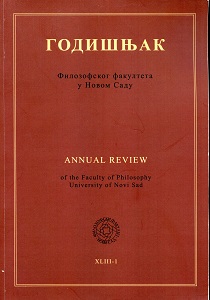SAVA NEMANJIĆ O SEBI. JEDAN PRIMER OBLIKOVANJA AUTOBIOGRAFSKOG DISKURSA U SRPSKOJ SREDNJOVEKOVNOJ KNJIŽEVNOSTI
SAVA NEMANJIC ABOUT HIMSELF. AN EXAMPLE OF DESIGN OF AUTOBIOGRAPHICAL DISCOURSE IN SERBIAN MEDIEVAL LITERATURE
Author(s): Nataša PolovinaSubject(s): Language and Literature Studies, Studies of Literature, Serbian Literature
Published by: Филозофски факултет, Универзитет у Новом Саду
Keywords: autobiographical discourse; hagiography; biography; confession; model
Summary/Abstract: The autobiographical discourse in Sava Nemanjic’s The Life of Simeon Nemanja is shaped in different ways and according to different models, which raises the question: What does Sava Nemanjic really say about himself in The Life of Simeon Nemanja? Why does he mention himself, in what context, and what is the purpose of his autobiographical statement? Sava’s autobiographical statement illustrates two basic models of autobiographical discourse that existed in the Middle Ages: the hagiographic and the confessional. The latter is most noticeable in Sava’s autobiographical note in the „wobble” between the third and the first person singular. This equilibrium of the autobiographical and biographical principle is evident in The Life of Simeon Nemanja, and it stems from what is essentially the same function of autobiographical and biographical texts: to deter mortals from sin. In medieval literature, the biographical and autobiographical approach to a life history is, in principle, balanced by the non-differentiation of the method of how people become acquainted with themselves and with each other, which ultimately results in frequent borrowing of biographical narrative patterns in autobiographical texts. The function of the autobiographical statement in The Life of Simeon Nemanja was not the fact that the writer expresses „oneself,” but acts on the other to influence on a reader. The self-confirmation, in particular, was formed in a meaningful sense, and therefore had a didactic function. It depicted a life that should be understood symbolically or allegorically, and only such a life can be a model for simulation.
Journal: Годишњак Филозофског факултета у Новом Саду
- Issue Year: 43/2018
- Issue No: 1
- Page Range: 503-515
- Page Count: 14
- Language: Serbian

